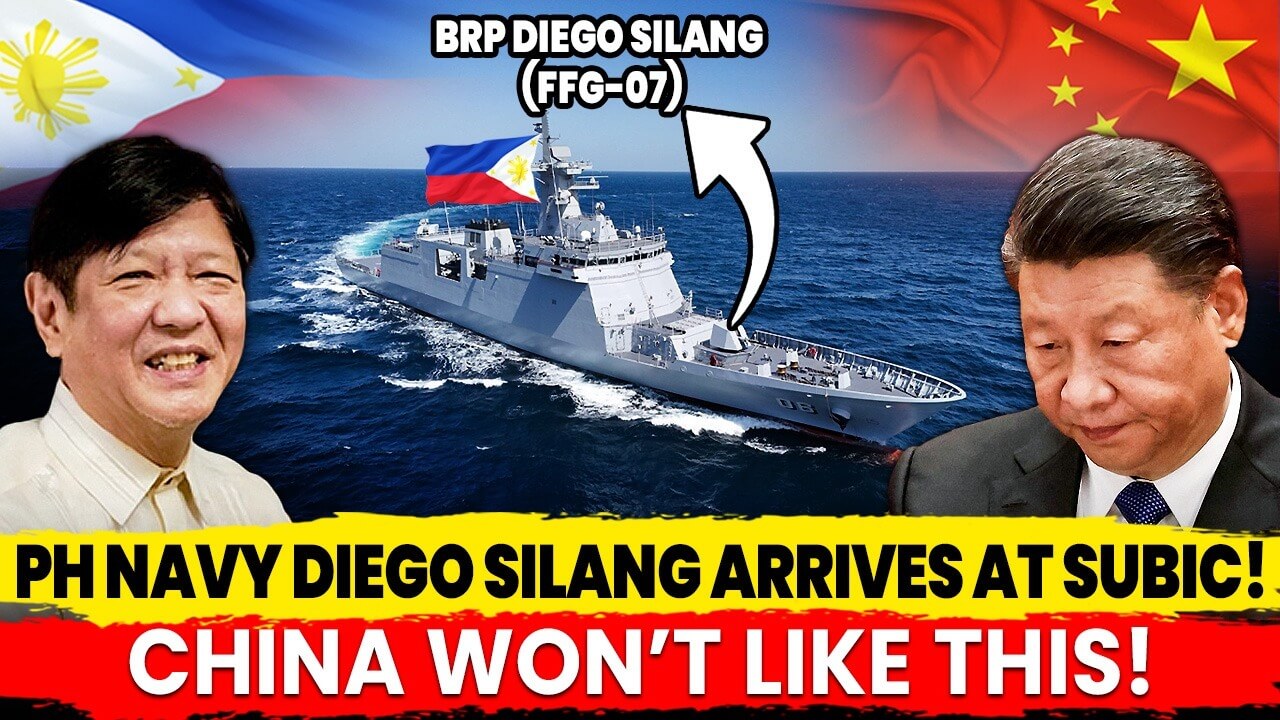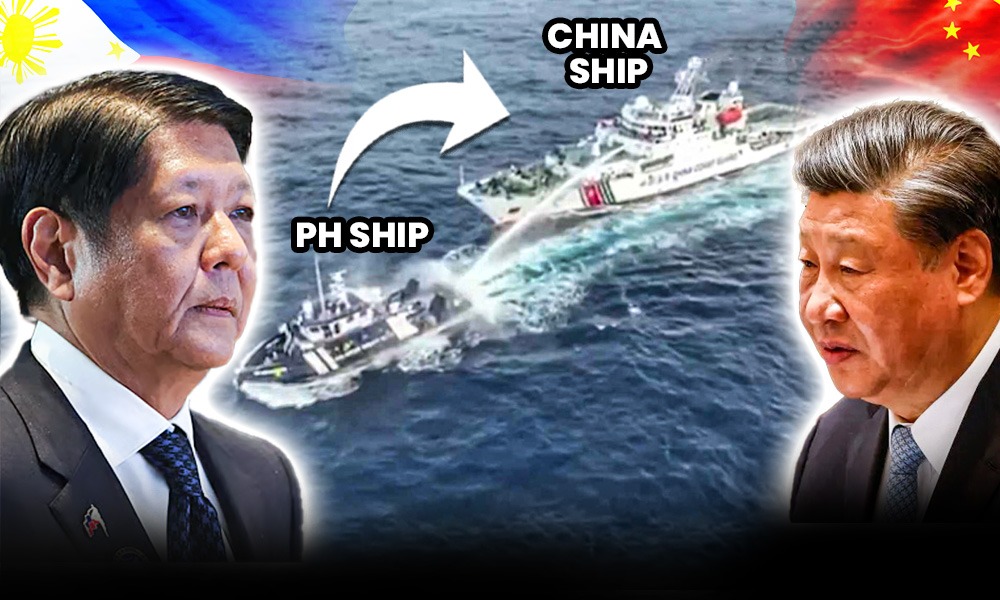The South China Sea just got even hotter. In a bold move, the Philippines is set to transform Grande and Chiquita islands, once part of the U.S. naval base in Subic Bay, into a military stronghold to counter China’s expanding influence. Meanwhile, Vietnam is quietly reinforcing its outposts, taking a page from Beijing’s island-building playbook. And over in Cambodia? A China-funded naval base at Ream is about to open, but guess what? The first foreign warship to dock won’t be Chinese… it’ll be Japanese.
This isn’t just a regional squabble, it’s a full-scale power struggle. China’s relentless aggression, blocking Filipino resupply missions, ramming Vietnamese boats, and fortifying disputed reefs, has turned the South China Sea into a high-stakes battlefield. But Beijing isn’t going unchallenged. The Philippines and Vietnam are fighting back, using military alliances, legal wins, and strategic outposts to push back against China’s maritime dominance.
With the U.S. stepping up military patrols and regional players ramping up their defenses, the big question is: Is Beijing’s dominance inevitable, or is this the beginning of a major pushback? The battle for the South China Sea is far from over.
China’s Strategy: Expanding Control & Militarization
China’s control over the South China Sea isn’t just about naval patrols, it’s a calculated strategy of expansion, militarization, and legal defiance. Over the past few decades, Beijing has transformed the region into a military stronghold, pushing its presence far beyond its mainland. Chinese warships and coast guard vessels now regularly operate over 1,600 km from China’s shores, enforcing territorial claims through constant patrols, blockades, and intimidation tactics.
One of Beijing’s most significant moves was securing control over the Paracel Islands in the 1970s, forcibly expelling Vietnam and establishing a permanent military presence. This was followed by its creeping takeover of the Spratly Islands, where China turned scattered reefs into full-scale military bases. Nowhere is this transformation more apparent than Mischief Reef. In the 1990s, it was a barren atoll with small huts for fishermen. By 2015, China had dredged the area, building massive artificial islands complete with runways, hangars for fighter jets, missile storage, and radar systems. Today, it serves as a strategic outpost, extending Beijing’s strike capabilities across Southeast Asia.
China justifies its expansion through its infamous Nine-Dash Line, a sweeping claim over nearly 90% of the South China Sea. Despite a 2016 international tribunal ruling that deemed these claims illegal, Beijing outright rejected the verdict, doubling down on its military build-up instead. With each passing year, the South China Sea becomes less of a disputed zone and more of a Chinese-controlled waterway, fueling tensions with neighboring nations and global powers alike.
The Philippines’ Response: Legal & Public Confrontation
The Philippines isn’t backing down in the South China Sea. Despite China’s military might, Manila has taken a different approach, one that combines legal victories, public exposure, and strategic alliances. In 2013, the Philippines took China to court, filing a case at the Permanent Court of Arbitration in The Hague. Three years later, the ruling was a landmark win: China’s sweeping claims under the Nine-Dash Line had no legal basis. The decision was celebrated across the Philippines, but Beijing refused to acknowledge it, doubling down on its military presence instead.
Rather than engage China in direct military conflict, Manila has turned to transparency warfare, publicly documenting Chinese aggression. The Philippine Navy and coast guard have repeatedly released footage of Chinese ships ramming Filipino vessels, using high-powered water cannons, and even wielding axes against Filipino troops. These videos, widely shared online, have forced global attention on Beijing’s coercion, pressuring other nations to respond.
On the frontline of this standoff is the BRP Sierra Madre, a rusting World War II-era ship that the Philippines deliberately grounded on Second Thomas Shoal in 1999. In spite of its deteriorating condition, Filipino marines are stationed aboard, serving as Manila’s symbolic and physical presence in the disputed waters. China, in response, has ramped up blockades, cutting off supply routes and increasing hostilities around the shoal.
The Philippines also relies on its decades-old military alliance with the United States. Under the Mutual Defense Treaty, Washington is obligated to defend Manila in case of an armed attack. Today, the Philippines hosts nine U.S. military bases, reinforcing America’s First Island Chain strategy to contain China. But while this alliance strengthens Manila’s position, some ASEAN neighbors warn against getting too close to the U.S., fearing it could escalate regional tensions further. As China tightens its grip on the South China Sea, the Philippines is proving that resistance doesn’t always require military strength, it just needs the right strategy and the world’s attention.
Vietnam’s Response: “Bamboo Diplomacy”
Vietnam is playing a careful game in the South China Sea, resisting Chinese expansion while avoiding open conflict. Its approach, often called “Bamboo Diplomacy”, blends quiet military expansion with strategic balancing between global powers.Unlike the Philippines, which openly challenges China, Vietnam expands its presence subtly. A prime example is Barque Canada Reef, where Vietnam has been steadily building structures for years. In 2024, the reef was transformed into a full-fledged military outpost, following China’s own island-building tactics. But Hanoi operates with caution, avoiding loud declarations or provocative actions that might trigger a direct clash with Beijing.
Vietnam’s hesitation to escalate is rooted in history. China is Vietnam’s largest trade partner, making economic stability a key concern. The 1979 Sino-Vietnamese War and the 1988 naval skirmish over Johnson South Reef, where China killed dozens of Vietnamese soldiers, serve as reminders of the risks of direct confrontation. While Vietnam defends its territorial claims, it does so without pushing Beijing too far.
At the same time, Vietnam carefully balances its ties between China and the United States. Hanoi accepts U.S. security aid, receiving patrol boats, radar systems, and intelligence support to boost its defenses. But unlike the Philippines, Vietnam refuses to host foreign military bases, maintaining its independence from any superpower. To keep tensions manageable, Vietnam even conducts joint naval patrols with China, ensuring that disputes don’t spiral into full-scale conflict. By strengthening its position without provoking war, Vietnam has proven that in the South China Sea, survival isn’t just about firepower, it’s about playing the long game.
Broader Geopolitical Implications
The South China Sea is turning into a pressure cooker, with China and the U.S. edging closer to a dangerous showdown. Every time a U.S. warship sails through disputed waters, Beijing scrambles its navy, sending destroyers to shadow, block, and even harass American vessels. The message from Washington is clear: “This isn’t your private lake.” But China isn’t just watching, it’s pushing back harder than ever.
Recent encounters have been alarmingly close. Chinese fighter jets have buzzed U.S. reconnaissance planes, sometimes coming within just a few meters. Warships from both sides have played high-stakes games of chicken, risking a collision that could spark something far worse. The reality? One wrong move, one miscalculation, and the South China Sea could explode into the world’s next major crisis.
On the other hand, China isn’t slowing down. With its artificial islands now bristling with missiles, airstrips, and naval facilities, Beijing is likely to continue pressuring smaller nations, pushing them to accept its dominance. While China has focused much of its coercion on the Philippines, Vietnam could be next as it quietly expands its outposts. A future standoff over a contested reef isn’t out of the question.
In spite of their different strategies, the Philippines and Vietnam share the same goal: resisting Chinese control. The Philippines takes a confrontational approach, relying on legal battles, public exposure, and U.S. military support. Vietnam, on the other hand, plays the long game, strengthening its position while carefully balancing relations with both superpowers. With tensions rising and military buildups accelerating, the South China Sea is no longer just about territorial disputes, it’s about the future of global power.
Conclusion: The Future of the South China Sea Dispute
The South China Sea is locked in a high-stakes struggle, and China shows no signs of backing down. With its militarized islands, naval patrols, and coercive tactics, Beijing is determined to dominate the region, no matter the opposition. But the Philippines and Vietnam are refusing to fold. The Philippines continues its confrontational approach, exposing China’s aggressive tactics and strengthening its alliance with the United States. And Vietnam plays the long game, expanding its presence while carefully avoiding direct conflict.
At the same time, U.S.-China tensions are only escalating. With American warships regularly challenging Beijing’s claims and Chinese forces growing more aggressive, the risk of an accidental clash turning into a crisis is real. One thing is certain: the South China Sea will remain a geopolitical flashpoint, not just for Southeast Asia, but for the entire world.



